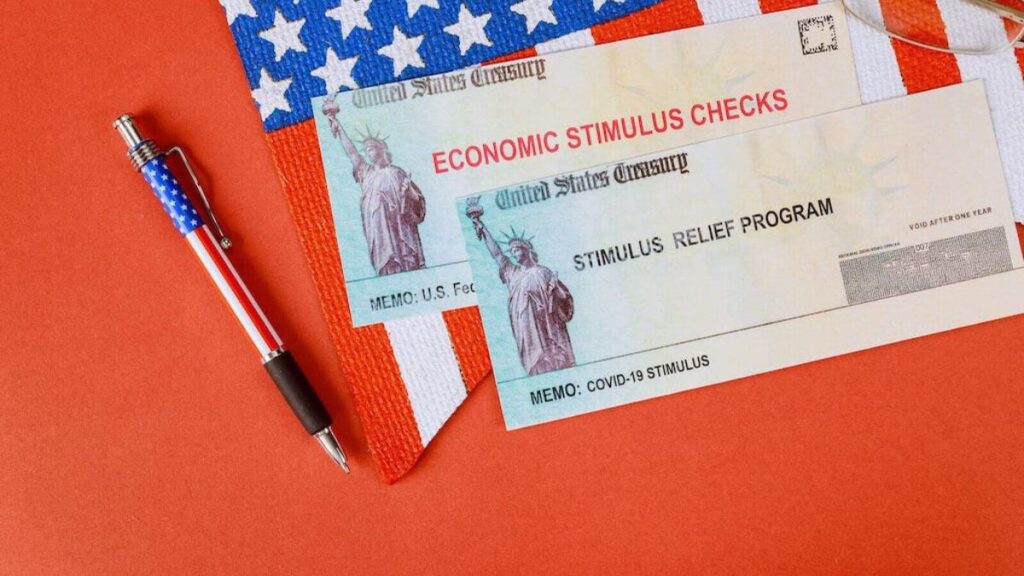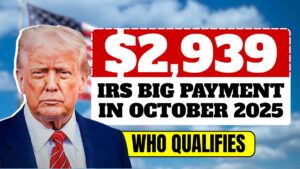News of the $1,600 stimulus check in 2025 has become a hot topic of discussion among Americans. Rising inflation, rising grocery prices, and the cost of everyday necessities have severely impacted the financial situation of many families. The promise of this economic relief program has brought a ray of hope to millions of Americans. This article will provide complete information about this $1,600 stimulus check, including eligibility, payment schedules, state-specific details, and how to securely receive the payment.
Introduction to the $1,600 Stimulus Payment

The $1,600 stimulus check for 2025 is not part of any federal relief program. It is being issued under state-level economic relief programs. Many US states have implemented this program to provide financial relief to residents through their budget surpluses and special economic recovery programs.
This amount is intended for families and individuals experiencing financial pressure due to inflation, rising grocery prices, energy bills, rent, and healthcare costs. The purpose of this program is to deposit funds directly into beneficiaries’ bank accounts or send checks to provide immediate relief.
Why the $1,600 Stimulus Payment Is Needed
Rising inflation and economic pressures have made it challenging for many American families to manage their monthly budgets.
The main reasons behind this move by states are:
- Providing Economic Relief: The continued rise in the prices of household expenses and daily necessities has increased the financial burden.
- Redistribution of State Budget Surpluses: Many states collected more than their revenues, and this is now being returned directly to citizens.
- Outstanding Pandemic Aid: Some states have unused COVID-19 relief funds reserved to help citizens in economic distress.
For these reasons, it is clear that the $1,600 stimulus payment is a form of emergency relief, specifically for those in financial distress.
Eligibility for the $1,600 Stimulus Payment
Eligibility criteria may vary for each state’s program. But most programs have some general criteria:
- Residency: You must be a resident of the state issuing the payment.
- Tax Filing: Most programs require submission of your 2023 state tax return.
- Income Limit: Your income must be within the eligibility limits set by the state.
- Not a Dependent: You must not be a dependent on another person’s tax return.
State-Specific Examples
California – Golden State Stimulus
- Payment: Up to $725 per household
- Target Group: Low- to Middle-Income Group
- Payment Method: Direct Deposit or Check
- Estimated Payment: Late 2025
Colorado – TABOR Refund
- $1,600 for married couples, $800 for single filers
- Tax return submission required by April 15, 2024
- Estimated Payment: Mid-2025
New York – Inflation Relief Program
- $300-$500 for eligible taxpayers
- Single filers with income up to $150,000, joint filers up to $300,000
- Estimated Payment: Fall 2025 (subject to final approval)
Payment Process
States have implemented several measures to ensure the payment process is fast and transparent.
- Direct Deposit: The fastest method, where funds are deposited directly into the beneficiary’s bank account.
- Paper Check: Checks are posted for those whose bank details are not updated.
- Prepaid Debit Card: This option is also available in some states.
Most states have ensured that payments reach all beneficiaries starting in October 2025 and ending in November 2025. This ensures that no one loses benefits due to technical or digital issues.
Confirmation and Tracking of Stimulus Payments
To check and confirm the status of your payment:
- Visit your state’s official tax website.
- Use the eligibility checker tool, if available.
- Login with your taxpayer ID or SSN.
- Keep your direct deposit details updated.
- Contact the IRS Payment Tracker or your state tax department if you don’t receive your payment.
Avoiding Stimulus Payment Scams
Stimulus payments are often targeted by scammers. Be careful:
- Do not respond to unsolicited calls, emails, or messages.
- Look for information only on authorized government websites.
- If you receive a suspicious check or card, verify it.
- Immediately report any fraud to the IRS or state tax department.
The Importance of the $1,600 Stimulus Payment
This payment is not just financial relief; it also provides mental and emotional support for citizens.
- Families will experience relief for their everyday expenses, such as groceries, rent, electricity, and medical bills.
- This payment is especially important for middle- and lower-middle-class families, who are facing the greatest hardship due to inflation.
- This move by the state government demonstrates that the administration understands the needs of citizens and is actively developing policies to help them.
Conclusion
The 2025 $1,600 stimulus payment is a vital relief measure for millions of Americans. It not only alleviates economic hardship but also instills confidence in citizens that their state and government are with them. If you are eligible and file your tax return on time, this payment can be a significant source of financial support.
This plan sends the message that financial relief is not just a sum of money but a symbol of trust and cooperation, strengthening the trusting relationship between citizens and the government.
FAQs
Q. What is the $1,600 stimulus payment?
A. It is a state-level economic relief payment in 2025 to help residents facing financial difficulties due to inflation and rising living costs.
Q. Who is eligible to receive it?
A. Eligibility depends on state residency, income limits, tax filings for 2023, and not being claimed as a dependent on someone else’s return.
Q. When will the payment arrive?
A. Payment timelines vary by state, generally between mid-2025 to late 2025, with direct deposits being the fastest method.
Q. How can I check if I qualify?
A. Check your state’s official tax website or use any eligibility checker tools provided by the state revenue department.
Q. How can I avoid scams related to this payment?
A. Do not share personal information with unknown callers or emails. Always verify details on official state or IRS websites and report suspicious activity.








